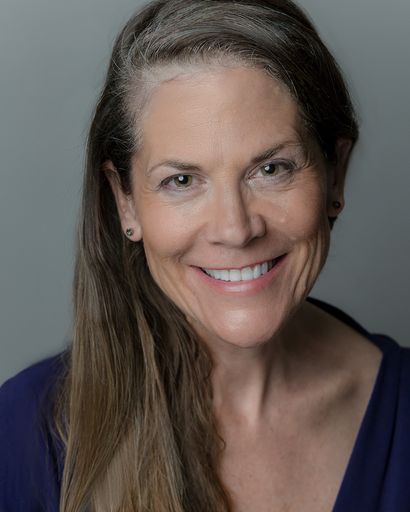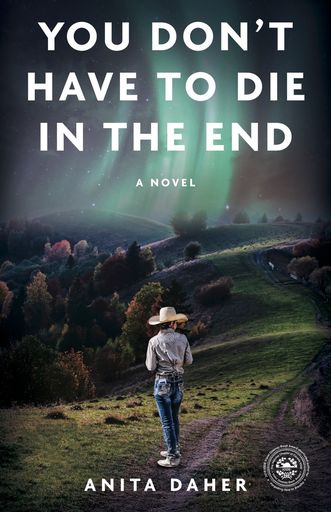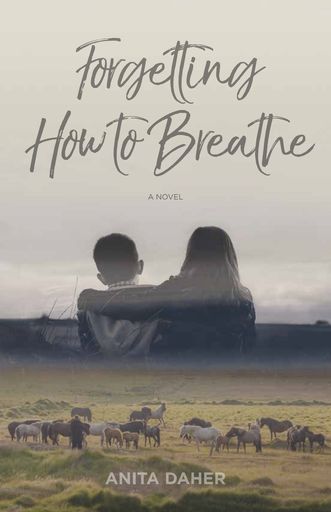Meeting Canadian Writers and Illustrators of Children’s Books
What inspires the writers of the books your students read? How does an illustrator decide what to draw? Is it true that most authors and illustrators don’t know each other? This column features a different Canadian children’s book creator in each issue and shows you the story beyond the covers.
Anita Daher
Riveting books for young readers as well as for older teens. Adventures in Canada’s North. After getting to know the books, I always enjoy getting to know the author who created the stories. This time—Anita Daher.
Margriet: Did you roll into writing through a different career or did you always want to be a writer?
 Anita: A bit of both! I fell in love with reading as soon as I learned to connect letters into words, and by age twelve discovered the joy of writing creatively. I thought how wonderful it would be to write stories that, one day, someone else would read. This shy, young introvert also thought she would never be good enough, nor important enough, to ever see her name on a book cover. It was the mid-1970s, well before home Internet and search engines, and I lived in an isolated Arctic community where writers never came to visit. I imagined authors were like movie stars living in far-away mansions on green hills. It wasn’t until years later, on a break from a career in aviation to look after my two babies, that I changed my mantra from“impossible” to “possible.” The adult me understood that through determination, patience and hard work, I could realize this dream—no matter how long it took. I began writing with an intent to be published, and seven years (!) later my first middle grade novel, Flight from Big Tangle, was published by Orca.
Anita: A bit of both! I fell in love with reading as soon as I learned to connect letters into words, and by age twelve discovered the joy of writing creatively. I thought how wonderful it would be to write stories that, one day, someone else would read. This shy, young introvert also thought she would never be good enough, nor important enough, to ever see her name on a book cover. It was the mid-1970s, well before home Internet and search engines, and I lived in an isolated Arctic community where writers never came to visit. I imagined authors were like movie stars living in far-away mansions on green hills. It wasn’t until years later, on a break from a career in aviation to look after my two babies, that I changed my mantra from“impossible” to “possible.” The adult me understood that through determination, patience and hard work, I could realize this dream—no matter how long it took. I began writing with an intent to be published, and seven years (!) later my first middle grade novel, Flight from Big Tangle, was published by Orca.
Margriet: You have written a picture book for younger kids and several middle grade and YA novels. Do you prefer one over the other?
 Anita: I enjoy writing for each age for different reasons. My YA novels delve into tough questions that I feel deeply about, but can be difficult emotionally to spend so much time with—because they do take time. I am not a fast writer and take on additional projects between drafts. You Don’t Have to Die in the End took ten years to get right, and each dive deep into Eugenia’s heart and mind would often have me in tears. Writing for younger readers allows me the chance to tap back into the exuberance, curiosity and joy I felt at that age. Alternating between joy and tough questions strikes me as healthy. It is certainly creatively satisfying.
Anita: I enjoy writing for each age for different reasons. My YA novels delve into tough questions that I feel deeply about, but can be difficult emotionally to spend so much time with—because they do take time. I am not a fast writer and take on additional projects between drafts. You Don’t Have to Die in the End took ten years to get right, and each dive deep into Eugenia’s heart and mind would often have me in tears. Writing for younger readers allows me the chance to tap back into the exuberance, curiosity and joy I felt at that age. Alternating between joy and tough questions strikes me as healthy. It is certainly creatively satisfying.
Margriet: Tell me about your process of writing novels for teens.
Anita: No matter how well I think I know what I will write about, I always have need for research— whether learning details about flora and fauna of a specific geographic location, the Intensive Support and Supervision program referenced in You Don’t Have to Die in the End, or quantum mechanics and weather phenomenon (which play a role in my current middle grade work-in-progress).
Margriet: Besides writing, you also act in theatre and film. How do writing and performing go hand in hand for you?
Anita: I’ve found each artistic practice enriches and supports the other. They offer opportunity to more fully explore and inhabit a character, which makes for a believable story and a more engaged audience/reader. It’s an opportunity to exercise the same muscles in different ways, similar to, for example, incorporating cycling and swimming into a regular exercise routine for a strong and healthy physical life. Creative cross-training, perhaps.
Margriet: What do you generally do as visiting author during a school visit?
Anita: Oh, how I miss school visits during these pandemic times! I like to ensure my presentations are interactive and use multiple platforms to better engage students who may have differing learning strengths and needs. I live in an “attention different” household and have learned my presentations are better received by a wide range of learners when I incorporate question and answer segments, performance, and multiple media such as photos and short films. For You Don’t Have to Die in the End, I adapted a scene to a four-minute, professionally-produced film.
Margriet: You juggle many hats including being the current chair of The Writers Union of Canada. Does that take away from your writing time or add value to you as a writer?
 Anita: It is an honour to represent Canadian writers, and so I find ways to balance. At times this means I must step away from a novel-in-progress for a few days, and it takes a few more to get back into the rhythm of story when I return. It’s worked well so far. I am one of those people who will always have an overfull plate. From the moment I began writing with intent to be published, I volunteered my time and skills for arts and writing organizations wherever I lived—Saskatoon, Thompson, La Ronge, Yellowknife, Sault Ste. Marie, and now Winnipeg. We must strengthen what we believe in.
Anita: It is an honour to represent Canadian writers, and so I find ways to balance. At times this means I must step away from a novel-in-progress for a few days, and it takes a few more to get back into the rhythm of story when I return. It’s worked well so far. I am one of those people who will always have an overfull plate. From the moment I began writing with intent to be published, I volunteered my time and skills for arts and writing organizations wherever I lived—Saskatoon, Thompson, La Ronge, Yellowknife, Sault Ste. Marie, and now Winnipeg. We must strengthen what we believe in.
Margriet: How are you (and the book industry in general) coping with the current pandemic?
Anita: It was tough, especially in the beginning. Launches were cancelled, new titles were left on shelves. Discoverability is difficult for Canadian titles at the best of times, particularly those not backed by international publishing conglomerates with access to large marketing budgets. School and library visits were cancelled, further depressing not only our primary way to increase awareness of our books but also our way to earn an income. As authors’ royalties are only a small part of how we earn our livelihood. We are, however, a resilient community and have found new ways to adapt. We learned new skills and recorded and live-streamed virtual readings, presentations, and workshops. I, too, do online presentations now. Stats gathered by Booknet Canada show an increase in reading—though not necessarily of Canadian books—over the early months of the pandemic. Discoverability of Canadian titles remains an issue whether shelves are physical or virtual. Authors also found ways to connect with each other, through Zoom meetings facilitated by organizations like CANSCAIP and the Writers’ Union of Canada, online writing, and reading “jams.” The desire to share our stories is part of the human condition. We find a way. Onward!
Check out: anitadaher.com
ABOUT THE AUTHOR
Margriet Ruurs
Margriet Ruurs is the author of over 40 books for children and conducts (ZOOM) school presentations: margrietruurs.com
Enjoy her travel-and-books blog here: globetrottingbooklovers.com
This article is featured in Canadian Teacher Magazine’s Spring 2021 issue.












